


In the ever-evolving world of technology, automation platforms like Walkiria are revolutionizing how businesses approach workflows and data management. Recently, I explored Walkiria's capabilities and documented the experience through a series of screenshots. Here’s a detailed walkthrough of what I discovered, along with insights into how this technology can reshape business operations.
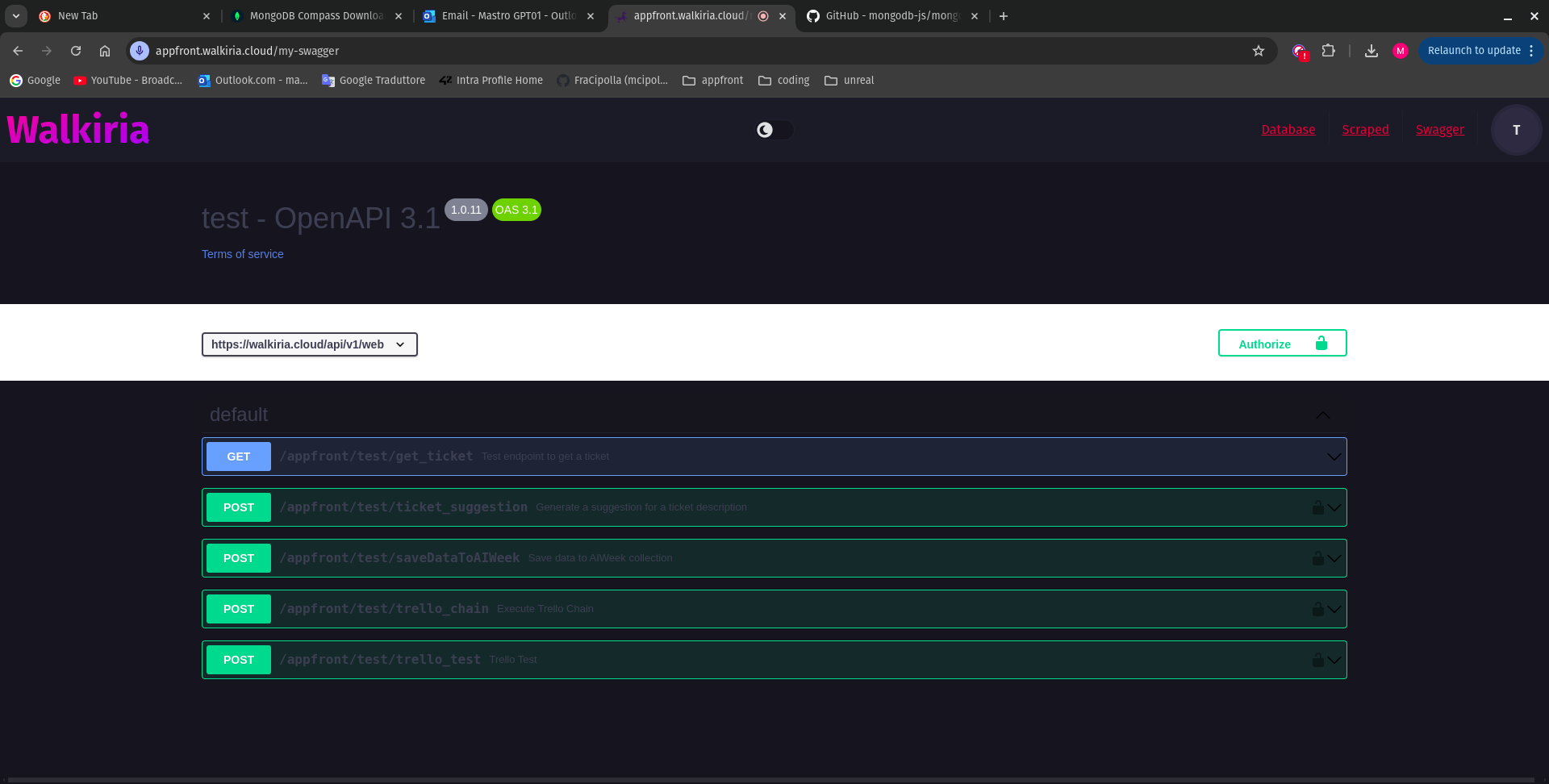
Here we showcases Walkiria’s Swagger-based API documentation. Walkiria exposes its functionalities through an OpenAPI 3.1 interface, making it easy to test and integrate endpoints.
Key endpoints include:
This structured API interface simplifies the interaction between the user and the backend, ensuring that data flows seamlessly.
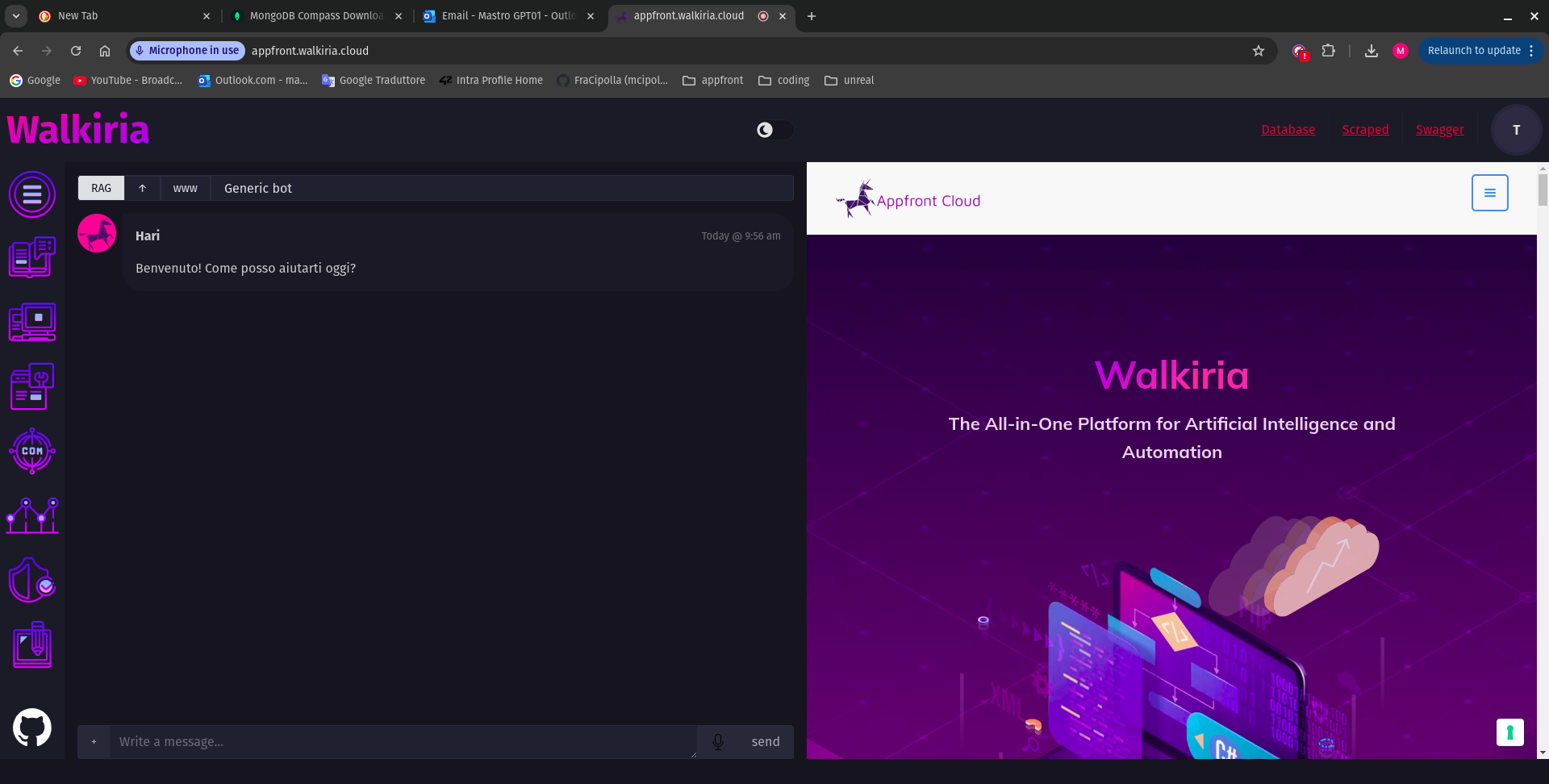
We introduces Hari, the Walkiria chatbot. This conversational interface allows users to interact with the platform without writing code.
Hari provides real-time assistance, guiding users through task execution. For instance, asking Hari to save a JSON into a database triggers the correct action without manual API calls. This approach democratizes automation, making it accessible to non-technical users.
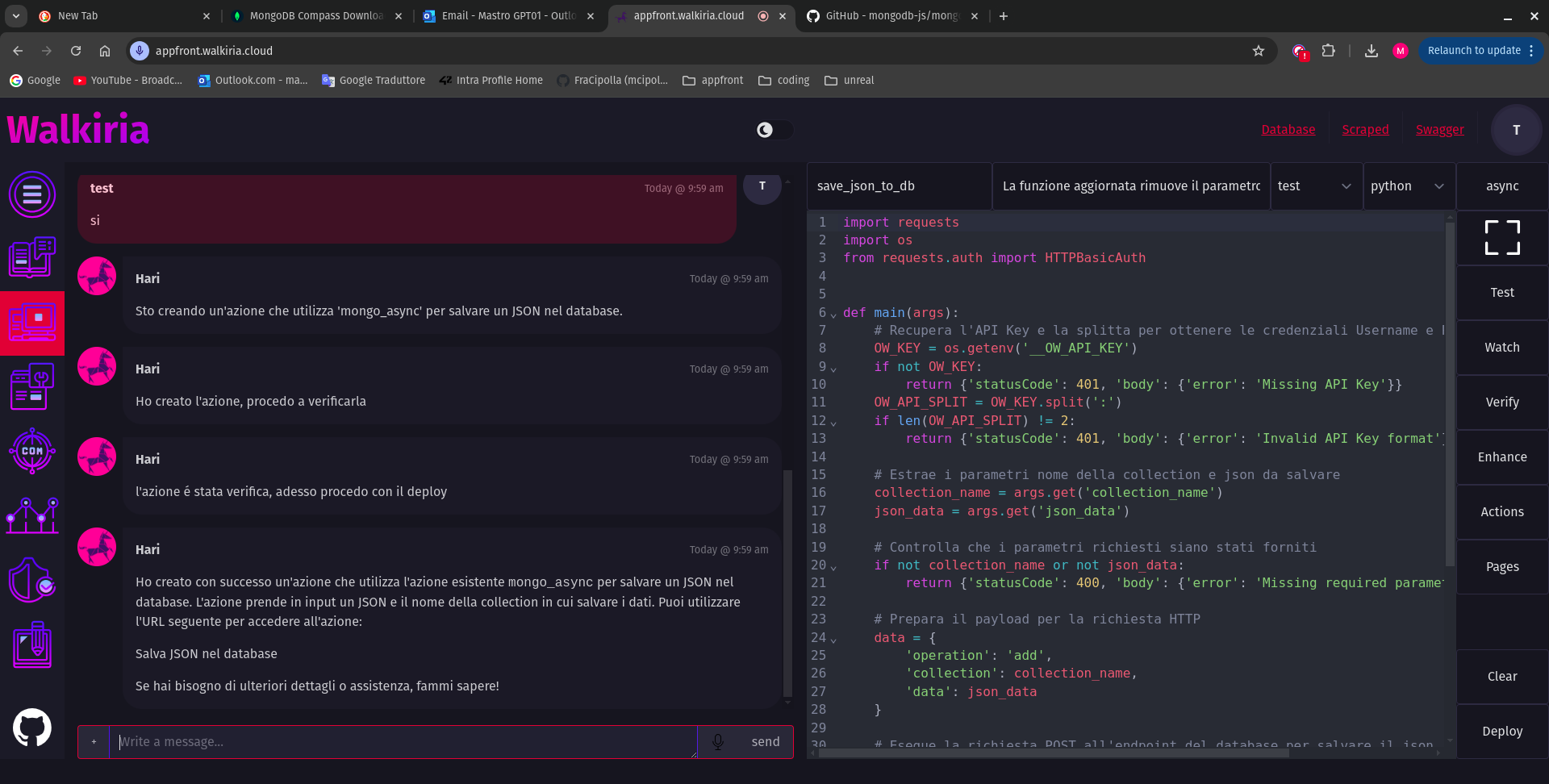
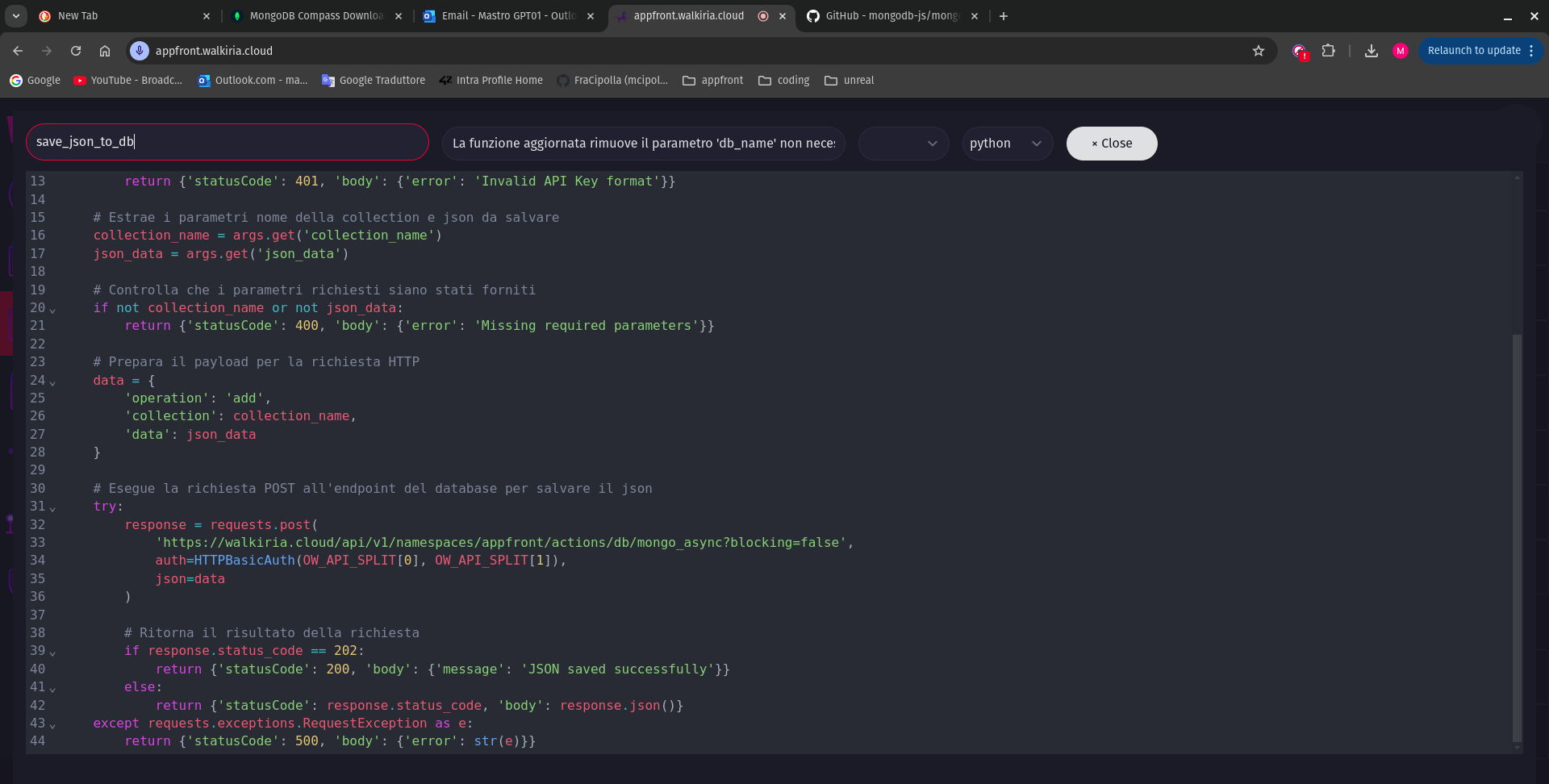
These images reveal the coding side of Walkiria. A Python function, save_json_to_db, facilitates saving JSON data into a MongoDB collection. The process follows these steps:
collection_name and json_data).mongo_async endpoint.This efficient setup ensures secure, reliable data storage without manual intervention.
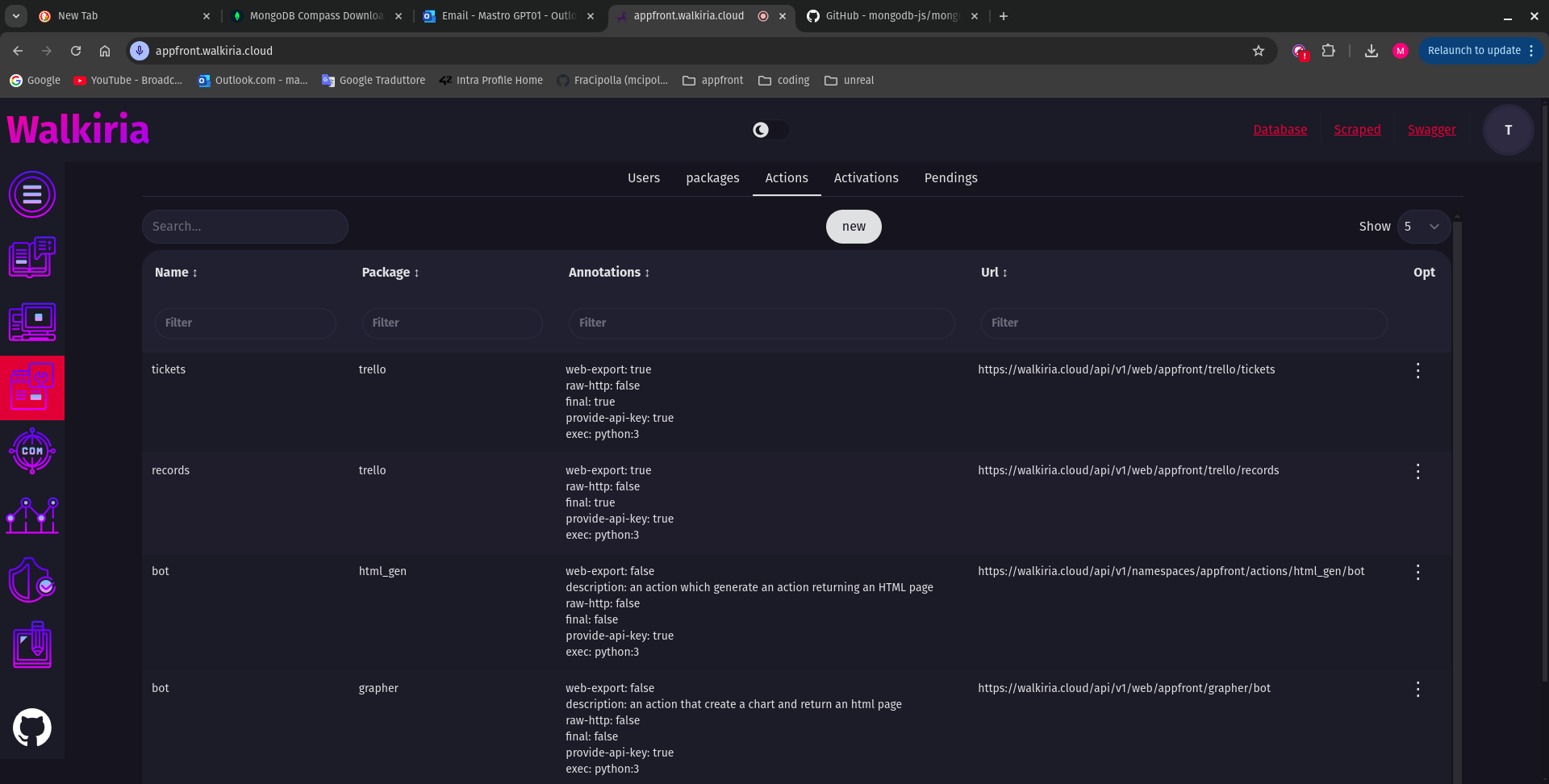
This image highlights Walkiria’s Actions dashboard, where users manage their automation tasks. Each action has metadata, including execution environment (Python 3), web export status, and API keys.
For example:
This organized interface streamlines task management, enabling users to focus on outcomes rather than infrastructure.

The final image illustrates a workflow created using Walkiria's Svelte Flow interface. This low-code environment allows users to design complex processes through drag-and-drop nodes.
In this case:
get_ticket action.ticket_suggestion action generates a relevant description.saveDataToAIWeek.Such visual orchestration reduces the complexity of building integrations, making automation approachable for all skill levels.
Walkiria exemplifies how modern automation platforms can transform business operations:
Looking ahead, platforms like Walkiria could become the backbone of digital transformation. Businesses can integrate AI-driven decision-making, real-time analytics, and cross-platform workflows, all without expanding their technical workforce.
Walkiria demonstrates the immense potential of no-code and low-code platforms in simplifying complex workflows. Whether managing databases, automating ticketing systems, or integrating with third-party tools like Trello, Walkiria bridges the gap between technical capabilities and business needs.
As technology advances, embracing platforms like Walkiria will be key to staying competitive, efficient, and innovative.